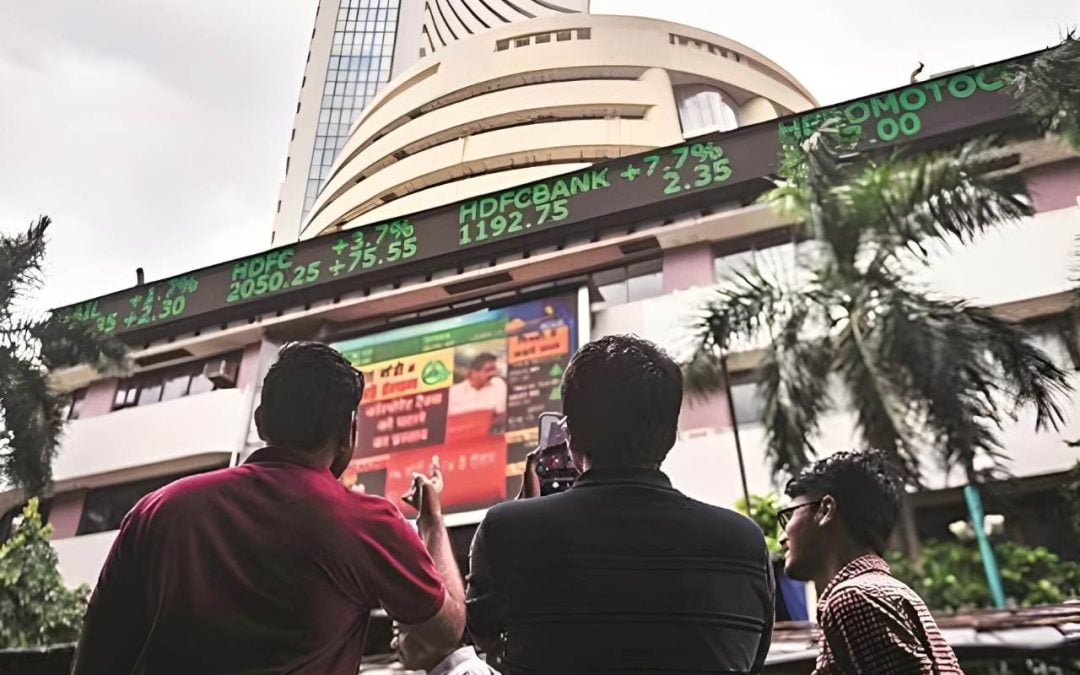Synopsis:
The shares of the State Bank of India are in focus after the company delivered a stellar financial performance in this quarter. Despite revenue seeing a downturn, it reported a 12% rise in Net Profit.
India’s largest commercial bank in terms of various metrics is in focus after multiple brokerages like CLSA, Jefferies, HSBC, and others have reacted to its financial performance. In this article, we will dive more into the details.
With a market capitalization of Rs 7,59,680 crore, the shares of State Bank of India Ltd are currently trading at Rs 823 per share, representing a decline of just 6 percent from its 52-week high of Rs 875.50 per share. Over the past five years, the stock has delivered a robust return of 320 percent.
Q1 Highlights
In Q1 FY26, the bank delivered a mixed performance. Net Interest Income was nearly flat at Rs 41,072 crore, down 0.13 percent YoY. The Net Interest Margin (NIM) declined by 32 bps to 2.90 percent for the whole bank and by 33 bps to 3.02 percent for the domestic book.
Despite this, Operating Profit rose 15.49 percent YoY to Rs 30,544 crore, supported by lower costs and higher non-interest income. Net Profit grew 12.48 percent YoY to Rs 19,160 crore, aided by a 1 bps drop in credit costs to 0.47 percent.
Asset quality improved, with Gross NPA reducing by 38 bps to 1.83 percent and Net NPA down 10 bps to 0.47 percent. Provision Coverage Ratio (PCR) stood at 74.49 percent, up 8 bps, while capital adequacy improved by 77 bps to 14.63 percent.
On the business front, Gross Advances rose 11.61 percent YoY to Rs 42.55 lakh crore, driven by 13.94 percent growth in retail, agriculture, and MSME (RAM) advances and 5.70 percent growth in corporate advances.
Total Deposits grew 11.66 percent YoY to Rs 54.73 lakh crore, with CASA deposits rising 8 percent and Term Deposits up 14.23 percent. Profitability metrics remained mixed, with Return on Assets improving by 4 bps to 1.14 percent and Return on Equity down 128 bps to 19.70 percent.
Overall, while margin compression weighed on interest income growth, the bank posted strong operational performance, healthy loan growth, improved asset quality, and robust capital position, signaling solid fundamentals.
Also Read: Diamond stock in focus after receiving ₹18 Cr international export order
Analyst Comments
HSBC has kept a “buy” rating on SBI, setting a target price of Rs 960 per share, signalling an upside of 17 percent from its current level. They believe the bank is in a great position to achieve solid loan growth while also keeping its margins intact, showing confidence in both its business expansion and the sustainability of its profits.
Jefferies shared a similar optimistic view, giving SBI a “buy” rating and a target price of Rs 970 per share, signaling an upside of 18 percent from its current level. They highlighted the management’s commitment to maintaining a 1 percent Return on Assets (RoA) and a 3 percent domestic Net Interest Margin (NIM), which reflects their confidence in the bank’s profitability outlook.
CLSA also assigned a “buy” recommendation, but with a higher target price of Rs 1,050 per share, signalling an upside of 28 percent from its current level. They pointed out the bank’s stable asset quality and noted that SBI’s pre-tax profit surpassed expectations by 32 percent, thanks to a robust core pre-provision operating profit (PPoP) and low credit costs.
Future Outlook
The bank is sticking to its credit growth forecast of 12 percent for the entire year, with a chance to increase it up to 13 percent if things take a turn for the better. They’re anticipating a U-shaped recovery in net interest margins, expecting a slight dip in the first and second quarters.
However, margins are set to improve further starting in September, thanks to the CRR cut. Management also reassured that there are no significant worries about asset quality.
With a strong performance in Q1, improving asset quality, healthy loan growth, and solid support from leading brokerages, SBI seems to be in a great position for further gains.
Although margins might face some short-term pressure, the management’s guidance, strong fundamentals, and positive growth outlook indicate that now could be an excellent time for long-term investors to take a closer look at India’s largest commercial bank. However, it is advised to do your own research before investing.
Written by Satyajeet Mukherjee
Disclaimer

The views and investment tips expressed by investment experts/broking houses/rating agencies on tradebrains.in are their own, and not that of the website or its management. Investing in equities poses a risk of financial losses. Investors must therefore exercise due caution while investing or trading in stocks. Trade Brains Technologies Private Limited or the author are not liable for any losses caused as a result of the decision based on this article. Please consult your investment advisor before investing.


